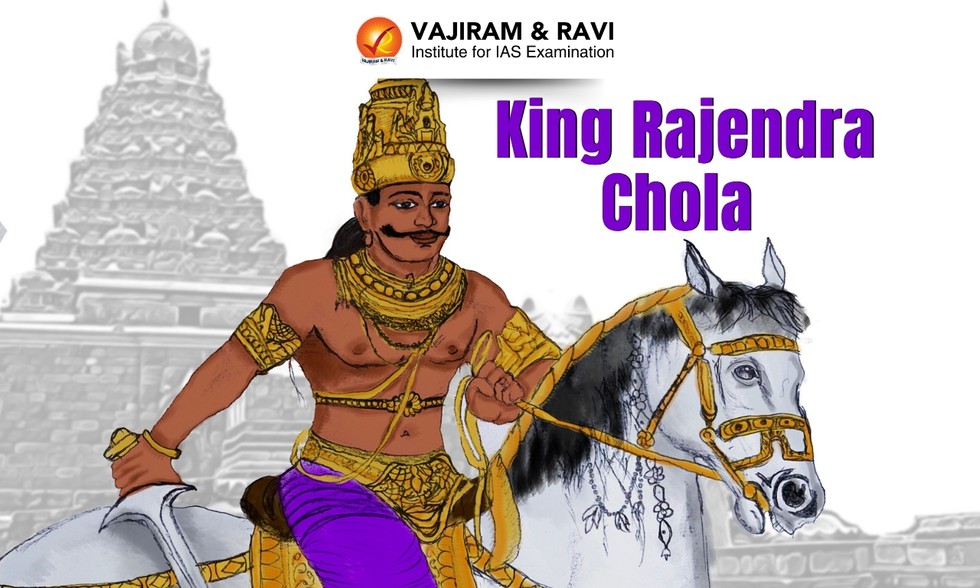About King Rajendra Chola I:
- Rajendra Chola I, often described as Rajendra the Great, was a Chola emperor who ruled between 1014 and 1044 CE.
- Rajendra succeeded his father, Rajaraja I, in 1014 CE.
- He was also known as Gangaikonda Cholan, meaning "Bringer of the Ganges River". Another title was Kadaram Kondan, which means "Conqueror of Kedah".
- Military Campaigns:
- During his reign, he extended the influences of the already vast Chola empire to the banks of the river Ganges in the north and across the ocean.
- He commanded the largest blue water navy in Indian history.
- Rajendra’s territories extended to coastal Burma, the Andaman and Nicobar Islands, Lakshadweep, and the Maldives, conquering the kings of Srivijaya (Sumatra, Java, and Malaya in South East Asia) and the Pegu Islands with his fleet of ships.
- He defeated Mahipala, the Pala king of Bengal and Bihar.
- Tamil Chola armies exacted tribute from Thailand and the Khmer kingdom of Cambodia.
- Rajendra stood as the first Indian king to take his armies overseas.
- In order to commemorate his victory to the Ganges and over the northern kings, Rajendra Chola I assumed the title of ‘Gangaikondachola’ and had a temple dedicated to Lord Shiva built, which he named ‘Gangaikondacholeshwaram Mahadev’.
- He also founded the city of ‘Gangaikondacholapuram’ and shifted his capital there from Thanjavur.
- It was a major center for trade for many centuries.
- The Chola Empire under him became one of the wealthiest empires of the time, developing connections with Song China in the east and the Arabs in the west.
- A hallmark of the Chola dynasty under his rule was the promotion of local self-governance, setting a unique example in administrative excellence.
- Religion: Rajendra followed Shaivism (a branch of Hinduism). However, he also welcomed Buddhism and built many stupas (Buddhist shrines) in South-East Asia and South India.
- Rajendra Chola I was followed by his son Rajadhiraja I.
